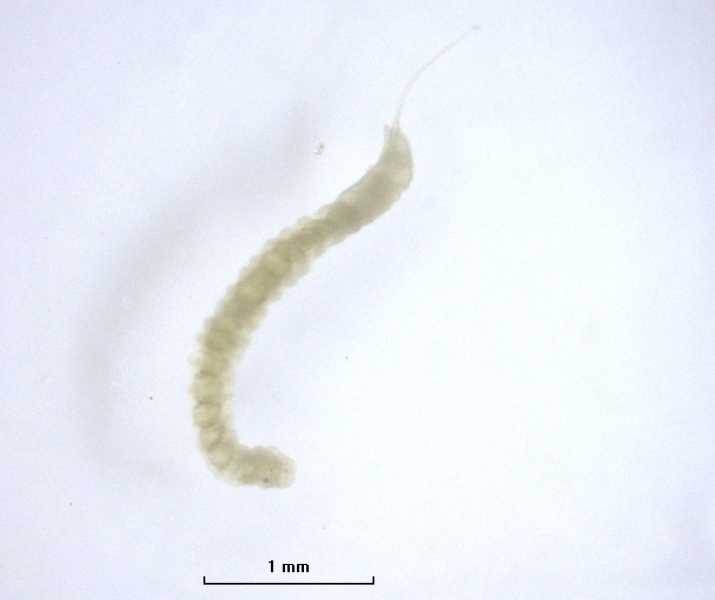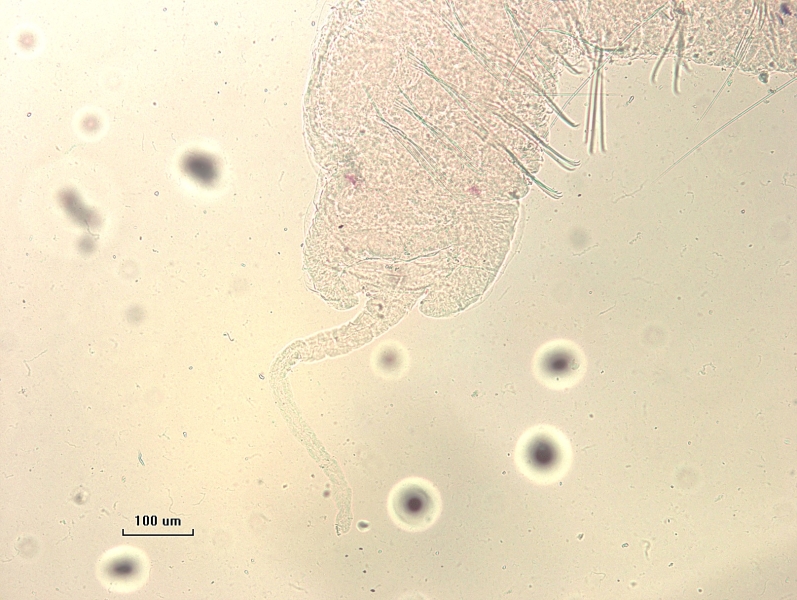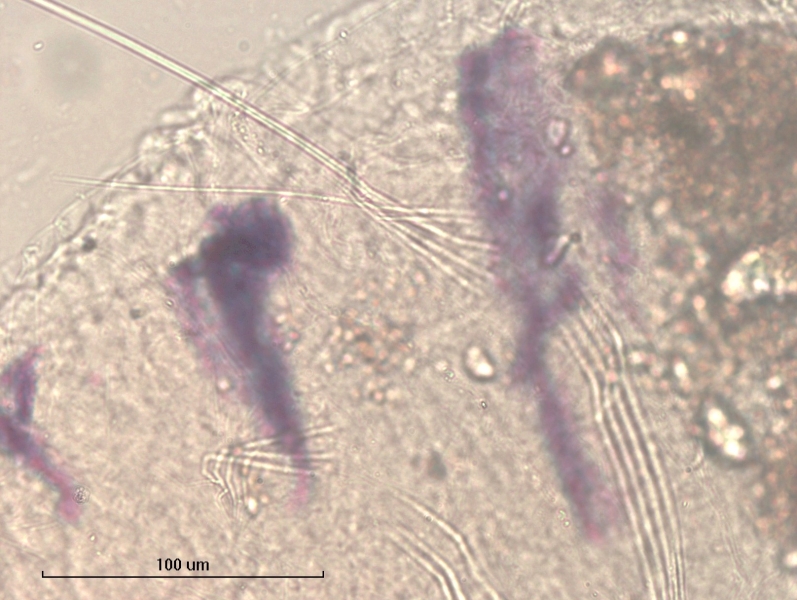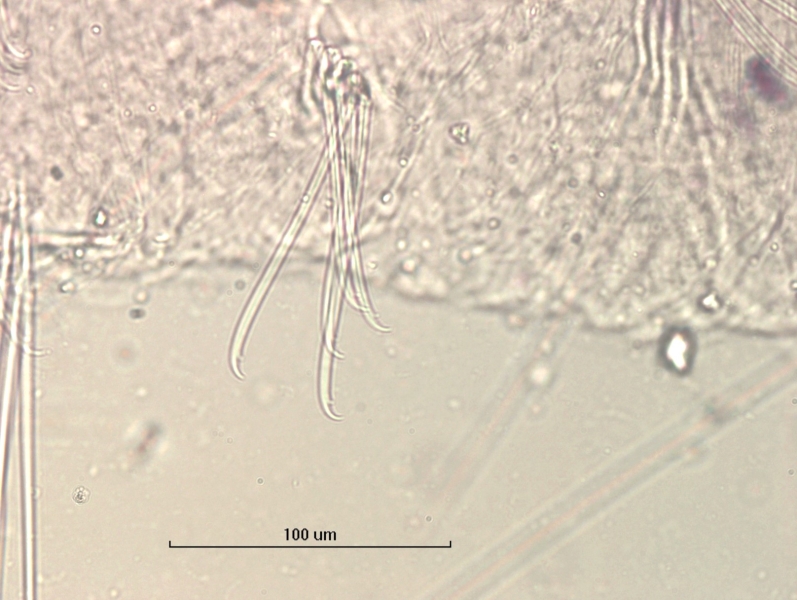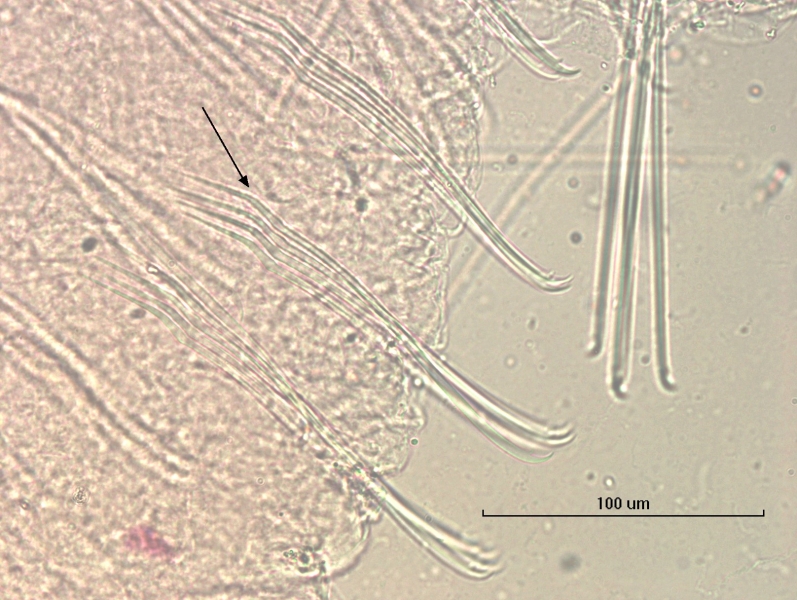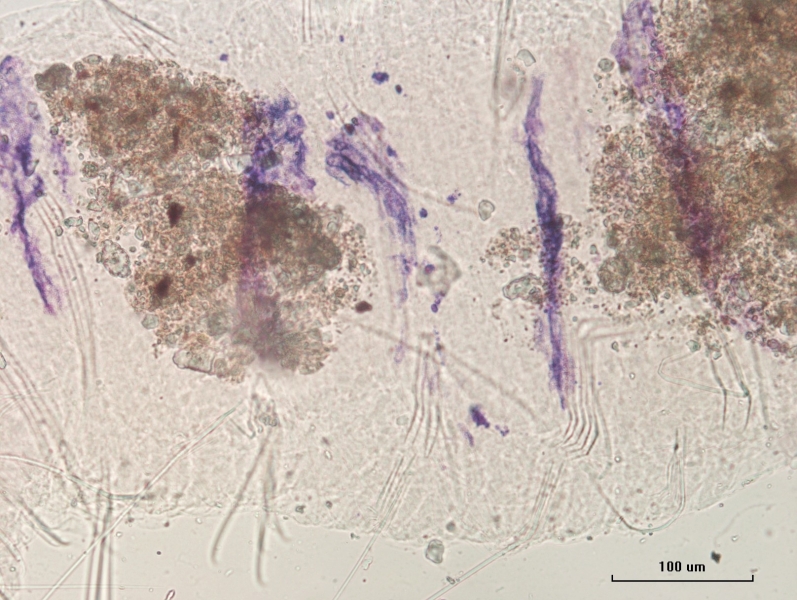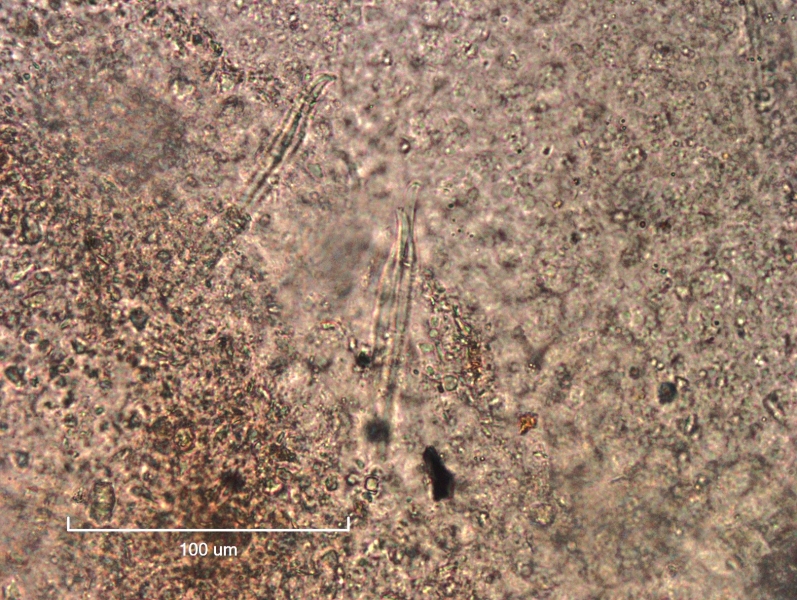Stylaria lacustris
Taxa description
Stylaria lacustris (Linnaeus, 1767) is a freshwater oligochaete worm that is uncommon in the Great Lakes. It is a naidid worm that has dorsal bundles with hair starting in VI, with or without eyes, and usually having a proboscis, although it may be broken. Dorsal bundles contain 1–3 hair chaetae and 3–4 simple-pointed needles without a nodulus. There are 4–14 ventral chaetae per bundle with the upper tooth longer than the lower but more importantly a double bend at the proximal end. The long proboscis usually starts from between two invaginated lobes, although it may start directly from the end of the prostomium. When it has invaginated lobes, the head may be somewhat flattened dorsally, and if eyes are present, they will be along the lateral margin below the invaginated lobes. S. fossularis may be a synonym, but it is accepted as a separate species by ITIS. S. fossularis was originally separated by lacking the invaginated lobes and having the proboscis starting from the end of the prostomium, as well as some specimens lacking the extra bend in the ventral chaetae. Kathman and Brinkhurst considered it a synonym of S. lacustris because there may be plasticity in the proboscis characteristics of S. lacustris and it was shown that it could change in culture (Kathman and Brinkhurst, 1998).
Distinguishing features
S. lacustris is identified by the dorsal bundles with hair chaetae in VI, ventral chaetae with a double bend near the proximal end, and proboscis usually with invaginated lobes. The dorsal chaetae are simple-pointed, and the ventral chaetae have the upper tooth longer than the lower. There may or may not be eyes. This species usually has a proboscis but in practice the proboscis may be torn off or obscured when mounted. In that case, rely on the chaetae. Zooids that have detached may be identified by the ventral chaetae even if they are lacking proboscis and have a flat, rectangular prostomium.
Habitat
Lake occurrence
This species occurs in all five Great Lakes.
Similar species
The features of S. lacustris are very distinctive, but there are a few other oligochaetes with proboscises that could look similar. The closest is S. fossularis, which has sometimes been considered a form of S. lacustris, although there are differences that support them being separate species. S. fossularis has a proboscis produced from a conical prostomium, instead of invaginated lobes, and it may only have one bend in the ventral chaetae, instead of the characteristic double-bend of S. lacustris.
Arcteonais lomondi and Ripistes parasita both have bundles with hair chaetae starting in VI and a proboscis. A. lomondi is found in our samples, but R. parasita has only been found in the North Channel of Lake Huron from our samples, so S. lacustris is most likely to be confused with the former. A. lomondi has a short proboscis starting from the end of the prostomium but lacks invaginated lobes. The hair chaetae are generally more numerous in A. lomondi and they form a tent shape, crossing near the proximal end. The ventral chaetae are gently curved instead of having a double-bend, with the ventrals of II being the longest and thickest, decreasing to V. The ventrals of S. lacustris do not change length. A. lomondi may or may not have eyes, similar to S. lacustris. R. parasita has a short proboscis starting from the end of the prostomium, lacking invaginated lobes. It is much hairier than S. lacustris, with up to 16 giant hair chaetae in VI–VIII, along with up to 6 shorter hairs and up to 18 simple-pointed needles in every dorsal bundle. Hairs in posterior bundles may be shorter, thicker, and appear hispid. S. lacustris does not have such variable or numerous dorsal chaetae. In R. parasita, the ventral chaetae of II are longer than III with the upper tooth longer than the lower, but IV and V lack ventral chaetae, and posterior chaetae are thicker with the upper tooth shorter than the lower. The ventrals have a single bend, not a double bend.
The main source of confusion with this species can occur if the proboscis is missing, since it won’t key out properly. With the invaginated lobes but no proboscis, S. lacustris could be confused with an oligochaete fragment due to its odd flattened or rectangular shape, but the dorsal chaetae starting in VI while the ventral chaetae start in II should help identify it as the head of a naidid worm. If it appears as the head of a naidid worm without a proboscis (perhaps lacking invaginated lobes), it will be difficult to key to anything because nothing else will have ventral chaetae with a double-bend in the proximal end.
Relative size
S. lacustris is a small or medium freshwater oligochaete.
Does it have a barcode reference from the Great Lakes?
Yes, this species does have a barcode reference from the Great Lakes.
References
Kathman, R.D., and R.O. Brinkhurst. 1998. Guide to Freshwater Oligochaetes of North America. pp. 62–63, 34.
Hiltunen, J.K., and D.J. Klemm. 1980. A Guide to the Naididae (Annelida: Clitellata: Oligochaeta) of North America. pp. 19, 38–39.
Stylaria fossularis Leidyi, 1852. Taxonomic Serial No.: 68873. Retrieved 7/19/2021, from the Integrated Taxonomic Information System (ITIS) on-line database, CC0.


